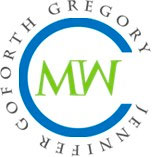7 Secrets to Making Content Marketing Editing Gigs Work
Note from Jennifer: As part of the 2013 WordCount Blogathon, Michelle Rafter, an experienced content marketing writer and editor, and I are exchanging guest posts. Since editing is not one my gifts, Michelle is shares her insight as a freelance content marketing editor. You can read my post on the WordCount blog on getting started in content marketing writing here.
By Michelle V. Rafter
Three years ago, if you’d asked me what a deliverable was, I’d have probably said something from the UPS guy.
Today, I can talk deliverables, SOWs and “scope creep” with the best of them. For the past three years, I’ve lived a dual life. Along with working as a freelance journalist, I’ve been initiated into Content Marketing Land, working as a contract editor on numerous corporate-sponsored editorial projects.
As a freelancer, it’s hard to ignore the buzz around content marketing, which has increased as traditional online advertising has shrunk. Companies have figured out that they can publish articles, blog posts, videos and newsletters just like publishers. The savviest also realize that if they want the best work, they need to hire people who know what they’re doing. That’s where we come in.
Since 2010, I’ve worked as an editorial consultant, project manager and editor. I’ve helped develop websites, edited blog series, produced whitepapers and case studies, and updated older web content. I’ve worked for Fortune 500 companies, digital media agencies, and web publishers. Some of the content marketing projects I’ve spearheaded did well. Others never made it out of draft mode due to the shifting sands of corporate marketing strategies.
Lots of content marketing work pays well. Some pays very well. Don’t let that fool you. Like any other type of writing, if done well, it’s hard work.
To maximize your efforts as an editor or manager on the content marketing projects, here’s my advice:
1. Create a detailed statement of work.
In addition to having a contract that covers the legal obligations of a project, create a statement of work (SOW) or contract addendum, which details the work you’ll be responsible for. A SOW could list how many blog posts, feature articles, whitepapers or case studies you’ll produce over a given period of time, plus format guidelines (if there are any), and how many revisions and reviews content will go through. When it comes to SOWs, the more details the better. A well-constructed SOW helps deflect the dreaded “scope creep,” where a project grows over time because the boundaries weren’t ever properly defined.
2. Carry media perils insurance.
If you work as a content marketing editor, chances are good you’ll be signing a contract with either a company, an agency or another type of middleman. Chances are also good the contract with contain indemnification or other onerous clauses you may or may not be able to get removed. To protect yourself, carry media perils insurance. These policies cover your legal costs should you be accused of failing to live up to any parts of the contract. Media perils policies aren’t cheap — I spend close to $1,000 a year. But they’re worth every penny. Here’s some more info on media perils insurance from a broker who sells it.
3. Don’t undersell your time.
Pricing content marketing editing work isn’t like asking for $1/word because the work involves so many different things. In a given week, you could participate in a conference call with a project manager, assign stories, edit copy or put stories into a client’s content management system, review the photo editor’s picks for stock images to run with blog posts, go to a conference, interview a company subject matter expert for ideas for upcoming stories, and on and one. Some companies and agencies pay for that type of work by the hour. My preference is to establish a project fee. If the project runs over multiple months, break up the fee into monthly payments. How to come up with a fee? Do your best to estimate everything that a project will entail and then multiple that by your standard hourly rate, then recast that as a monthly fee. Or consider what your target monthly income is and how much time you can or want to devote to this project. For example, if you shoot for total monthly income of $10,000 and you think a project will represent half of your available hours in a month, you have to charge $5,000. If that seems wildly over what a client seems willing to pay, you need to cut the hours and work you’re working for them, your hourly rate or both. Another way to calculate rates is asking around to see what other people charge. Or you could look at what you’ve charged the same or different clients in the past for similar work. If you calculate rates several ways and come up with roughly the same numbers, you should feel confident that you’re charging what you should be charging. I’ve written more about this here: Dear WordCount: How do I set a rate for a corporate writing project?
4. If you get to hire writers, go for the best.
The content marketing projects I manage tend to be on similar business-related subjects. Over the years, I’ve assembled a go-to team of freelance business reporters I turn to when I have new projects because I know they understand the subject matter, and are familiar with the differences between features or blog posts produced for content marketing writing and traditional journalism. I also know I can count on them to turn in clean copy on time. It may take some convincing to get the agency or company you’re working with to budget more for hiring good writers, but it’s worth it in the long run because it saves you and your client the time it would take to redo poor work. The same goes for any other creative types you hire for a project, including graphic designers or photo editors.
5. Be prepared to be a teacher.
If you’re working with a company or agency that hasn’t done much other content marketing work, or hasn’t ever worked with editors or writers, be prepared to be a teacher. They’ll be teaching you about their business and their goals for the campaigns they want you to run. But you’ll be teaching them the basics of good journalism, timely publication, good social media promotion strategies, and why all of it matters. That’s a lot of ground to cover. You may be bursting with tons of great ideas, but if they’re still learning, you may have to take it one step at a time.
6. Avoid releases.
I’ve worked on whitepapers projects that went up in flames because a source wouldn’t sign the client’s overly onerous testimonial release form. Some companies demand them. If that’s the case, make it part of your SOW negotiations to have them be responsible for release forms, so you don’t have to.
7. Schedule face time.
I make a point of flying cross country to visit one client about once every year to 18 months. Yes, it’s expensive: flight, hotel, taxis, etc. But I’ve established a great working relationship with them, to the point where they sometimes schedule projects around my availability. And over the years, I’ve earned tens of thousands of dollars doing work for them, which alleviated the need to do much other marketing during those times. That’s worth it. When I know I’m going to be on vacation in cities where other clients have offices, I try to set up coffee or lunch to put in some face time with them too.
Michelle V. Rafter works as an editor and content project manager, writes about tech, jobs and business, and runs the WordCount blog for freelance writers. Follow her on Twitter, LinkedIn, Pinterest and Facebook.



Thanks for this great post. I could have used an SOW on a recent project. I’m also realizing I could market other work I’m doing as content marketing. Ha! Exciting stuff!
I’m so glad you liked the post! I hope you stop by again soon. Please let me know if you have any specific content marketing questions and I will try to address them in an upcoming post!
Thanks for sharing this! It’s awesome to hear how others manage clients and work. I definitely got a few great ideas.
I”m glad you enjoyed Michelle’s guest post! I was honored to have her. Thanks for stopping by.
Proof that my brain is going — Jennifer, I thought this was you writing on Michelle’s blog.
In any case, nice work teaming up on this. One of the best links I’ve posted on my LinkedIn group.
I’m glad you liked it. Here is my post on Michelle’s blog http://michellerafter.com/2013/06/12/how-freelancers-can-break-into-content-marketing-writing/. I was thrilled I was able to team up with her for this as well.
I am also a big fan of the detailed SOW
I totally agree! I think it is especially important in Content Marketing since scope creep happens all the time. Great point and I think it actually warrants its own blog post in the near future since many journalists and freelancers are not used to writing a SOW. Thanks for the idea.